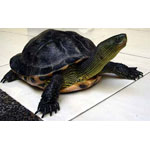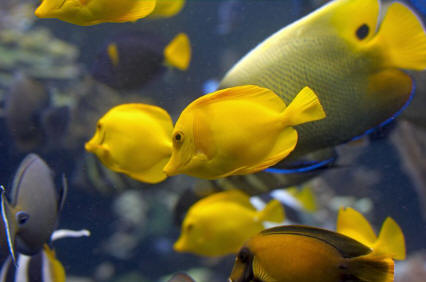Striped Neck Goldfish

|
Scientific Name: Carassius auratus Price: Upon Request Origin: Taiwan, southern China, and northern Vietnam Family: Bataguridae NOT AVAILABLE NOW |
|
Other Names: Striped Neck Turtle, Ocadia sinensis, Chinese stripe-necked turtle, Golden thread turtle, Mauremys sinensis |
|
Technical Info
Temperature: 22 - 25 ℃
pH: 6.5 - 7.8
GH: 5 - 20
Max size: 30 cm
Description
This especially striking freshwater turtle can be distinguished by the fine yellow and black lines that decorate the neck, for which this turtle is named (2). The oval upper shell (carapace) is reddish-brown to black, with each horny scute being outlined with yellow. The shell on the underside of the turtle, or plastron, is yellow, with a large brown or black blotch on each scute. The limbs are olive and, like the neck, are covered with fine yellow stripes. Scales cover the skin of the forelimbs and all the limbs are webbed. The Chinese stripe-necked turtle has a narrow head, with a slightly pointed snout (2), and cream-coloured jaws and chin (3). Female Chinese stripe-necked turtles are larger than males, and males also differ by having a slightly concave plastron
Food
Eats invertebrates, crustaceans, mollusks, fish, insects, snails, tadpoles, and aquatic plants. Young are primarily carnivorous, but consume progressively larger amounts of vegetation as they mature.
Breeding
The Chinese stripe-necked turtle is believed to nest from late March to early June, when it lays a clutch of 7 to 17 eggs. The nests in which the eggs are laid are often visited by predators; spiders (Lycosidae species) have been seen feeding on the eggs, and dogs are also thought to be a potential predator of the eggs and hatchlings. Turtle hatchlings have been first seen in early August.
Note
These turtles very adapt themselves to an external lodging in a small lake, but it would be opportune to carry the animals to the warmth in the winter months in order to avoid to make them to go in letargo.

